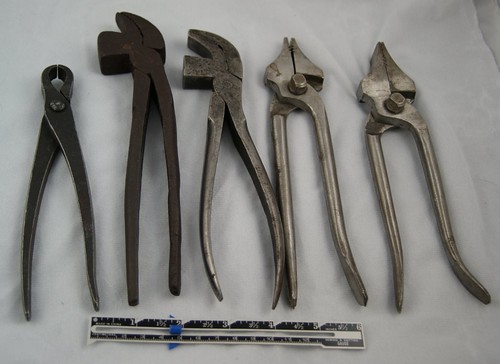Part II
At the time when this book was published (early 19th century) shoe-making was a fairly profitable business; some shoe-makers owned huge shops with large window displays showing off their designs to rich men and women. The shoe-maker himself would buy his leather in half-hides and skins; keeping some for his business and selling the rest on to other shops. He would always be very knowledgeable in the type of leather he was using.
Journeyman were highly skilled at making women's shoes; these required greater ingenuity due to the finer materials and smaller stitches. Women were employed to bind the shoe together and sew together those made of higher quality material such as silk or satin.
However these old fashioned-techniques of making shoes by hand were revolutionised in 1883, when an invention by Suriname-born Jan Matzeliger was patented in Lynn, Massachusetts. It was an automatic shoe-lasting machine that made it possible to make 150-700 pairs of shoes a day-14 times more than a person could! It went into production in 1885 and cut the prices of shoes in half-meaning they were now affordable to the average American.
(Information courtesy of Dean K. Anderson and Stamponhistory.com).
Pincers used in shoemaking (the far left one is 18th century, the second left is early 19th century and the other 3 are modern).
 Old cobbler's tools from 1880-1910, found at Charles Roberts' Wagon Works at Horbury Bridge, Wakefield. Not sure what they're exactly for but they did repairing as shoes then were expensive to replace.
Old cobbler's tools from 1880-1910, found at Charles Roberts' Wagon Works at Horbury Bridge, Wakefield. Not sure what they're exactly for but they did repairing as shoes then were expensive to replace.  An old cobbler's tool made of cast iron with a large wood block base.
An old cobbler's tool made of cast iron with a large wood block base. 
No comments:
Post a Comment